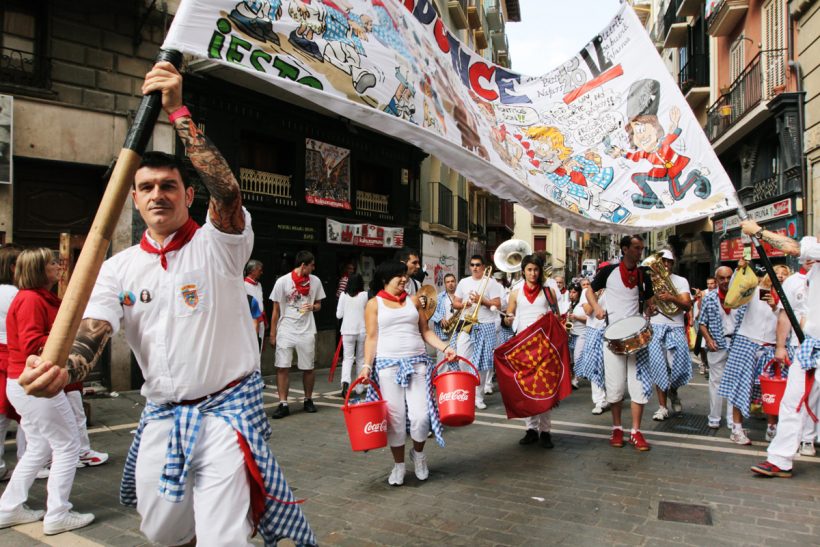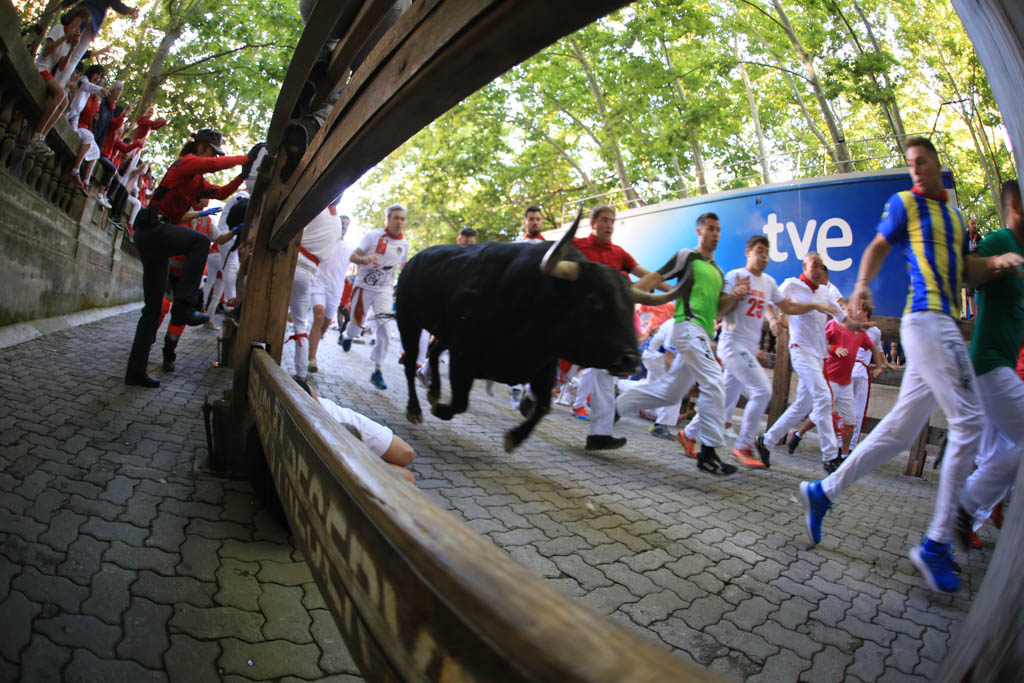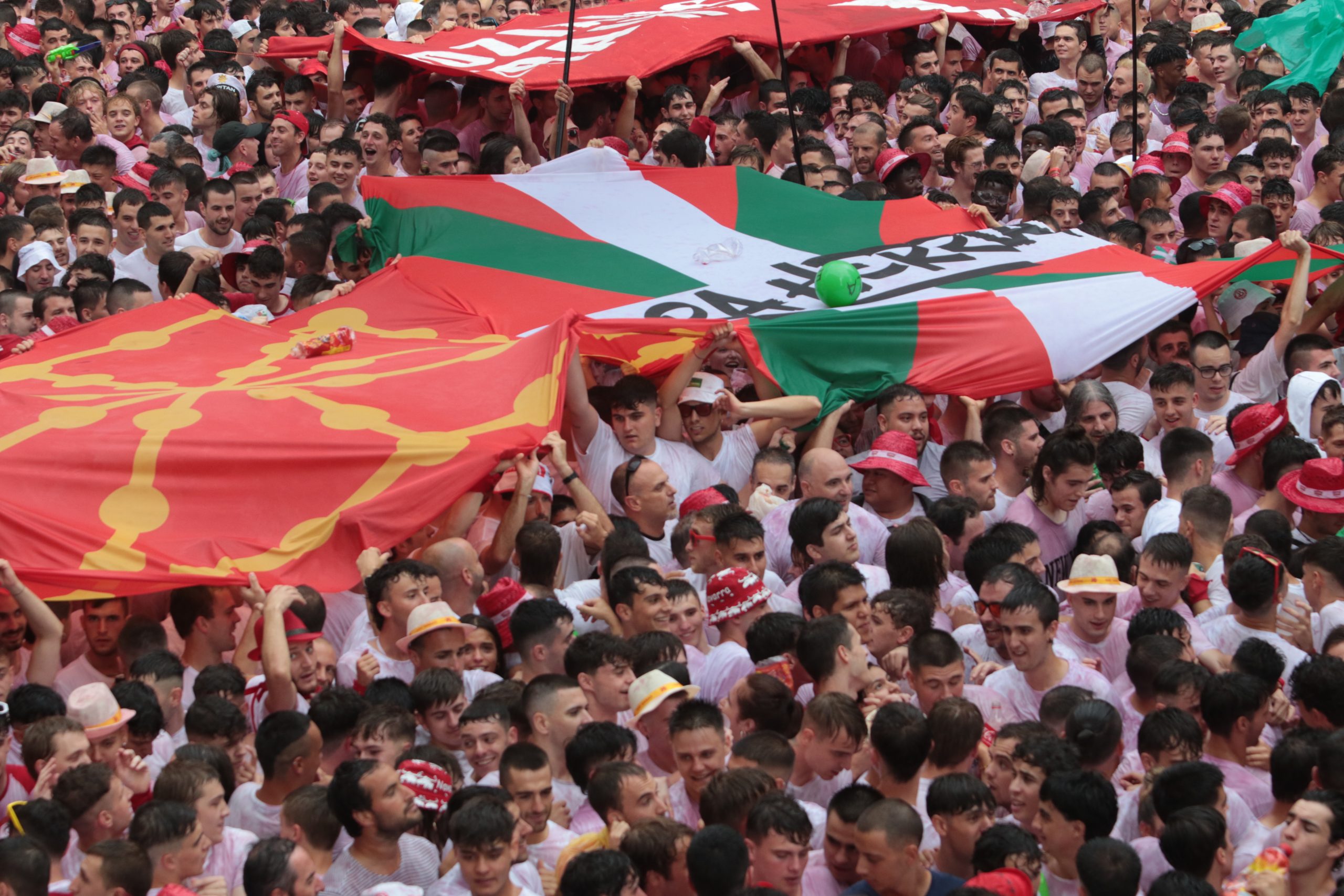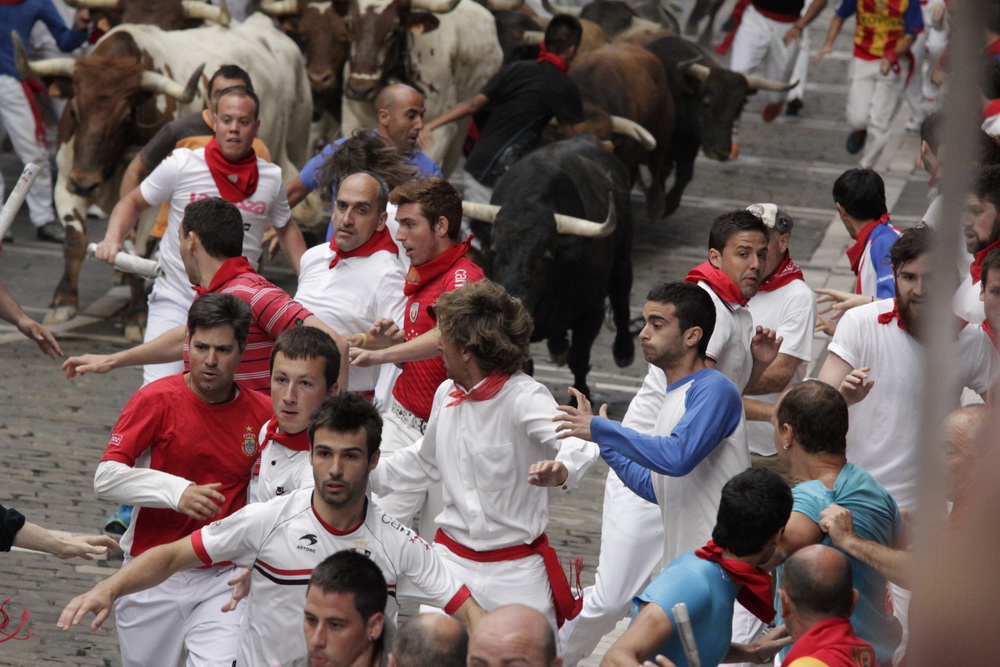One of the beautiful things about writing about Pamplona and everything involved with it is that there is just so much to choose from. Any town that was established well over a thousand years ago will have an almost inexhaustible amount of history to choose from. When that town is already strategically placed as to be fairly be important, and hence become famous as being part of the Camino de Santiago de Compostela, well, it’s place in the history books is assured.
Think about it…tourism didn’t exist a thousand years ago, of course, but if you were to go a-wandering for any reason, there is a good chance it would be to make a religious pilgrimage, and whether be it to Jerusalem, or Lourdes…or Santiago de Compostela, and if you were going to Santiago and coming from the north then you’d almost certainly pass through Pamplona.
Throw in a famous saint, the local population, a crazy bull run, nine days of organised anarchy, and some of the most famous people from the last hundred years, along with alcohol, music and bucket loads of ice, and you have the ingredients for the ultimate hedonistic cocktail.
Yes of course, this extraordinary city is famous for many things, but especially for its fiesta. I often think that if aliens landed to invade us, say, somewhere in the outback of Australia, they’d think, yup, this should be easy, or if they landed in central London or New York, they might think, jeez, these people need our help…but if they landed during fiesta in Pamplona, I think they’d be on the first spaceship back home. Unless they were party animal aliens, of course, in which case they’d stay for the whole thing, leave with their two heads tucked between their luminous tails, but return every year.
As we’re in that bit of no-mans land between the post fiesta highs and come down, but not yet being able to look forward to Christmas and New Year, and of course the first of the countdown-to-fiesta “escalera’s,” I thought I just go off on my own sort of meandering, Pamplona style.
El Maestro: Manuel Turrillas Ezcurra
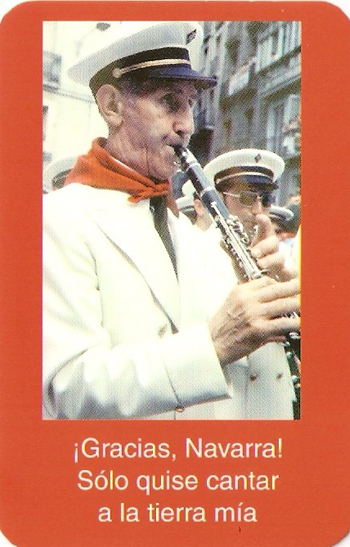
Fifteen years ago on October 20th 1997 one of the great Navarrans died. His name was Manuel Turrillas Ezcurra, and he was born in the village of Barrasoain , just under 25 km south of Pamplona. And beautifully, for those who know not just what the “Escalera” is, but the song too, he was born in 1905…on January 1st. Just perfect.
He is now known just as El Maestro Turrillas, because he really gave the modern fiesta as we know it now it’s beating, thumping, pumping heart. I mentioned him briefly in last month’s piece about the heavenly peña “La Veleta” but I thought it was about time I mentioned him more fully.
If you’ve ever woken up, say, on the grass in the Plaza de Castillo in the old town, and felt the earth moving, (steady!), or woken up in a flat and felt the walls pounding, you might quite possibly have been feeling the effects of your heart going into overdrive trying to keep you alive…or it could be that one of the peña bands was going past and playing one of El Maestro’s songs. Or both of the above, quite possibly…
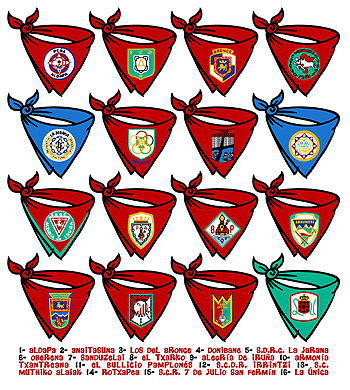
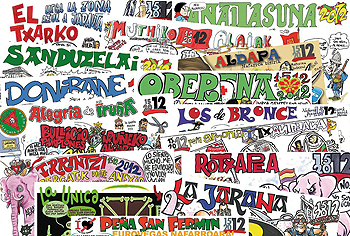
This amazing man was a true Pamplonican too, as he moved there when he was 20, and pretty instantly joined the town hall band, La Pamplonesa, where he stayed for 50 years. He wrote about 400 songs of all kinds, and some of those you will have heard and no doubt danced to during fiesta. Many of the peñas asked him to write their club hymn, and he also wrote the local football club’s song too.
And yes, he is honoured with a statue to him in his home town of Barrasoain, and they also put up a bust of him in a plaza named after him in a suburb of Pamplona, Berriozar, which was inaugurated in August 1998, but unfortunately it was stolen just a year ago and still hasn’t been found. Some people just have no learning or respect, actually, just no idea, and I hope at least once every day a pigeon in Pamplona poops on the perpetrators.
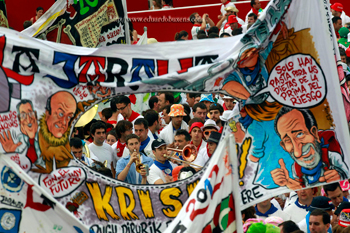
Now, just as I love the fact that he was born on January the 1st, there is something else that is rather touching. Maestro Turillas didn’t just live in Pamplona, but he lived in the Casco Viejo, the old town. And where would this man of Pamplona , of fiesta, who through his music will always live on, and has hence become an indelible part of San Fermin, live do you think? Well, there is a plaque marking where he used to live, in a street called La Cuesta de Santo Domingo. For those of you who don’t know, that is where the bull run begins.
And oh-so-perfectly, as so many of us know, before the encierro begins, a short refrain is sung three times to a replica of San Fermin that is put in the little niche in the old walls near the beginning of the run. Way back during my first fiestas I joined in singing that song, and my skin is tingling now as if it were just yesterday. The words go like this: “A San Fermin pedimos, por ser nuestro patron, nos guie en el encierro, dandanos su bendicion.” They have been singing this song before the run ever since 1962,and they also form part of the words to the club hymn of La Unica, formed in 1903 and the oldest of all Pamplona ’s peñas.
What do the words mean? Just this: “To San Fermin we ask it,as he’s our patron saint, guide us in the bull run and give us your benediction.” And why do I think it is “oh-so-perfect” that this particular song is sung on Santo Domingo Hill, where the maestro Turillas lived? Because he wrote the music to it. Sometimes, you just can’t improve the script or better the truth. I bet there is one happy man up in that great fiesta in the sky when he hears his song sung every July. What a musician, what a maestro, and by all accounts, what a lovely man.
The refrain sung to the saint before the run.
La Casa de la Misericordia
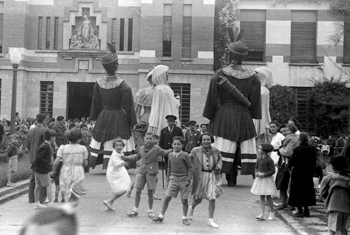
The word “misericordia” means forgiveness, pity…or mercy. The House of Mercy is an institution that has been going in Pamplona since 1706. It started out as a place that looked after the most “unfortunate” and “unfavoured” of the city’s inhabitants. Originally this included the young as well as the old, but it wasn’t until 1980 when they began to only look after old people who needed help.
But in 1920, when the town authorities decided to demolish the old bullring and construct a new one nearby, the rising costs effectively meant the town hall couldn’t afford to finance it, and eventually in stepped the Casa de Misericordia, who thanks to finance from various people and places in Pamplona to build the new Plaza de Toros became the de facto owners. Construction began in March 1921, and was speeded up when the old ring burnt down in August of that year, as they had to have a ring ready for the following year’s fiesta. And ready it was for its inauguration the following July 7th, 1922.
Ever since then this charity organises everything in relation to the bulls: the contracting of the ranches and the bullfighters, the setting up of the corrals where the bulls stay when they arrive in Pamplona,the arrival of the bulls into those same corrals, the setting up and construction of the wooden barriers that keep, hopefully, the bulls away from the watching crowds during the run, the shepherds (pastors) that run with the bulls and have saved so many runners from injury or worse, (as Alexander Fiske-Harrison pointed out to me, “shepherds” look after sheep…but I don’t know what other word to use – herdsman? Got it! ) and everything else you see or don’t see in the ring – the ticket collectors, bullring staff, the band, and even the butchery…the Casa de Misericordia looks after the lot.
James Michener and“The Drifters”
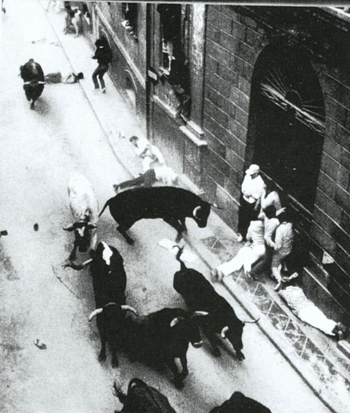
I thought it was about time I wrote my own little homage to a man I never met but who changed my life for ever, and for the better. And that is one of the most understated things I have ever written. This man didn’t just change my world, he introduced me to a whole new one. Pamplona , of course, and the Fiesta of San Fermin.
In 1980 I bought a book about a bunch of travellers at the tail end of the sixties, 3 guys and 3 girls from various countries, who meet up in Spain and decide to travel together. The first place they decide to go to as a group is Pamplona, during fiesta time. The Pamplona chapter is 100 pages long and quite frankly I just didn’t believe it. I knew the book was fiction, but this was just fairy tale stuff…surely, in this modern day and age a festival as medieval and crazy as what was described in the book just couldn’t exist? I knew one day I would go and find out.
Well, four years later with a friend I rode my Norton motorbike down through France, crashed the thing near the border, but made it to Pamplona by train. I still feel glad that I crashed…maybe I wouldn’t have arrived in Pamplona when I did, or chosen the corner of the Plaza del Castillo that I did…and hence met the people I did. But I tell you what, when I walked into the square on that July 6th afternoon, I knew I had found what I hadn’t even been looking for, a paradise on earth that still brings the goose bumps up whenever I think about it or whenever I am there.
Michener wrote many books, mostly fiction, but also a superb factual book called Iberia, packed with history and stories and photographs, and is well worth a read, especially if you love Spain. There is also his autobiography, “The World Is My Home.” But for The Drifters, I have to thank you James Michener, as my life has been immeasurably blessed by that one book.
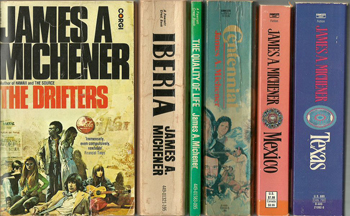
I could go on… thanks Hemingway, for influencing Michener, thanks Gertrude Stein for telling Hemingway…but really the thanks are due to Pamplona and it’s people, for turning a religious event into something that really is out-of-this-world…as I said near the beginning,what on earth would one of those other-worldly aliens make of this town and its inhabitants? I know what I made of it, and it changed my life for the infinitesimal better. Thank you Pamplona and Pamplonicans, I love you to bits, and as I wrote somewhere else recently…I blame the patxaran.
Monty Python
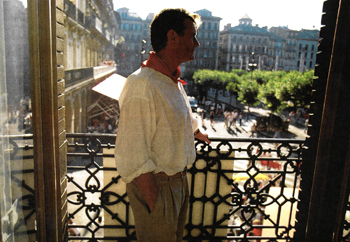
Oh, and Monty Python? Well, sort of, but not quite….but another “M.P.” for sure. And no, not my brother, Michael Pinks, but Michael Palin.
For those who don’t know, Michael Palin was part of Monty Python, but he was also a huge Ernest Hemingway fan. Ever since he was a boy growing up in the northern English city of Sheffield , he read Hemingway’s books and fell for this world outside his own that the great man wrote about. As he wrote in his book that accompanied a BBC travel series, “Hemingway Adventure,” after reading some of the man’s stuff, he felt like, he wrote, “I’d grown up a little. Lost my literary virginity. Books would never be quite the same again.”
He decided he would go out and experience Hemingway’s world, and that; “I must be bold and fearless and go out there and do it for myself.” He goes on to say; “Unfortunately in the 1950’s there wasn’t much call for provincial English schoolboys to carry mortars up Spanish hillsides, and though I had a goldfish I hadn’t fought for seven hours to land it.”
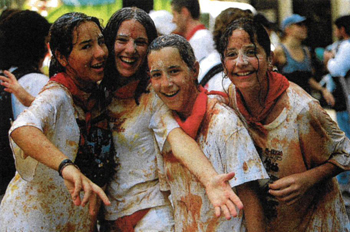
Decades later, and well after the Monty Python series and films were over, he has become a bit of a traveller, in fact a hugely entertaining, knowledgeable and funny one, who does wonderful and witty travel programmes for the BBC, and for the centenary of Hemingway’s birth in 1999, the Beeb, as we call them, sent him around the world following the writers path. And so it came to pass, of course, that he ended up in Pamplona during fiesta.
He stayed in the La Perla hotel in the square for the three days he was there, before having to move on and film more for the series, but he certainly caught the mood of fiesta. After all for those who know, those first three days are madness personified. Magic, marvellous and manic madness for sure and if you can only go for a few days, make it the beginning!
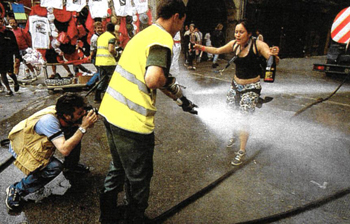
He didn’t do the run itself, but watched it from a balcony window in the hotel, but he did of course talked to people about it, including John Macho and James Ballor, always known as Curly. In the book, when he asks Curly about the run and why he did it and what he felt from it, one of the reasons Curly gives him is; “It’s an aphrodisiac, Michael. Believe me.” His reply? “Believe him or not, I can’t help thinking taking Viagra would be easier.”
“Michael Palin’s Hemingway Adventure” was a great series, and the book is a colourful and interesting travelogue through Hemingway’s life, written in Palin’s own simple, straightforward and inimitable style. It’s funny too. (He also wrote a funny novel called “Hemingway’s Chair”, for those of you interested.) But I’ll leave with this quote from the book of the series, before he watched his first run.
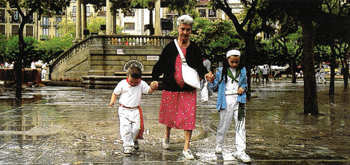
“There is not much rest to be had in Pamplona tonight. Those who have run with the bulls before will try to sleep as best they can. Those who haven’t will, likely as not, have been awake most of the night saucing themselves up. Those of us who are here to film have to be getting into positions on the course by six o’clock. And the noise goes on. It’s like the night before battle.” Two things I love in that paragraph…”saucing themselves up!” and “the noise goes on. It’s like the night before battle”. He got it!
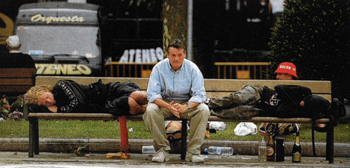
The Osasuna song
So, back to El Maestro Turillas for this months ending video, and let’s go from bulls…to balls. I mentioned he wrote the club song for the local football team, Osasuna, so here it is. There are many versions out there on the net of course, and of much better quality, but these guys in the band are my friends, and I love them to bits too. They are a Pamplona band, and used to be called Impekables, but are now Los Zopilotes Txirriaos. The song is “We’ll always be Reds.” But for some reason that night the words were changed to “We’ll always be guiris” (foreigners). Can’t imagine for the life of me why…the song starts after about 40 seconds. Remember, the music is The Maestro’s…

